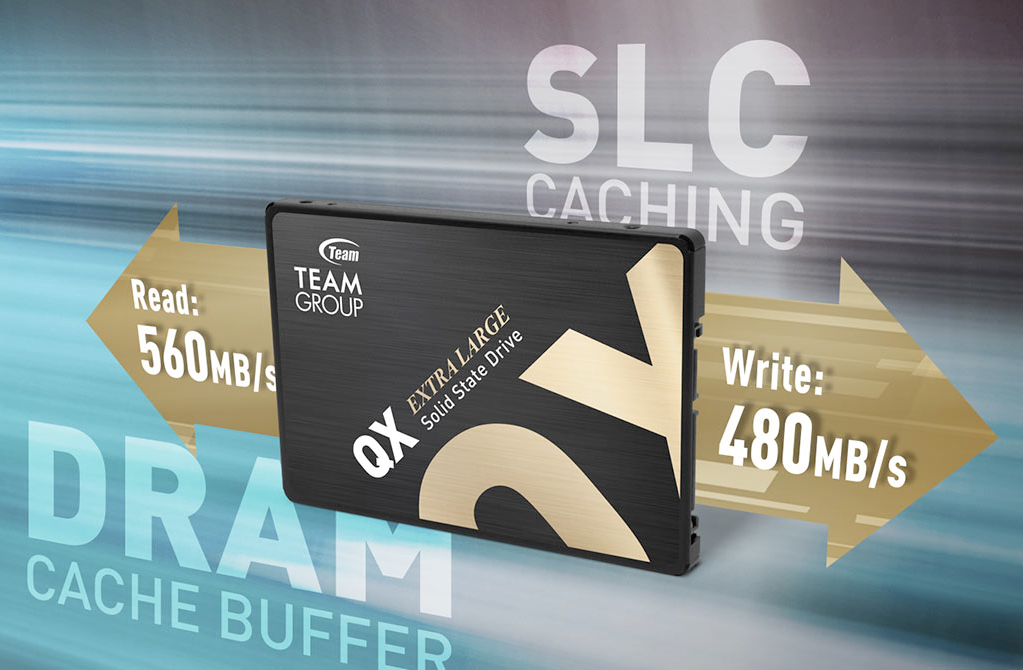TeamGroup Announces 15.3 TB SATA SSD for Desktop PCs
TeamGroup’s 2.5-inch/7mm SSD offers extreme capacity, but at a price
TeamGroup, a producer of DRAM and NAND-based devices aimed primarily at client PCs, has introduced its new SSD that carries 15.3 TB of 3D QLC NAND, a capacity that one comes to expect from a server or a workstation-grade drive. TeamGroup’s QX SSDs will be made to order and it remains to be seen whether they will ever be available in retail.
Aiming its QX drives at prosumers who need to store vast amounts of data locally, TeamGroup’s QX SSD will be available only in a 15.3 TB configuration. The manufacturer confirms that to build such an oversized storage device it used high-capacity 3D QLC NAND chips, but it yet has to disclose which controller powers the drive. We know that the controller supports pseudo-SLC caching and a DRAM buffer, so we are dealing with a fairly high-end chip presumably designed for the enterprise market as it supports a capacity not common for client systems.
When it comes to performance, TeamGroup rates the QX drive model T253X7153T0C101 for up to 560 MB/s sequential read speeds as well as up to 480 MB/s sequential write speeds (based on the Crystal Disk Mark benchmark) when pseudo-SLC cache is used. Meanwhile, the company does not disclose random read and write performance of its giant SSD.
One of the key selling points of TeamGroup’s QX SSD is the combination of its rather extreme capacity of 15.3 TB as well as a 2.5-inch/7mm form-factor that enables to install the drive into a mainstream laptop or an ultra-compact desktop. Many competing drives featuring similar capacities usually come in a 3.5-inch or a 2.5-inch/9.5mm form-factor that naturally prevent their installation into smaller systems.
The TeamGroup QX 15.3 TB drive is covered with a three-year limited warranty and is rated for up to 2560 terabytes written (TBW), which means 0.15 drive writes per day (DWPD). When compared to other client SSDs (which typically feature considerably lower capacities), the DWPD rating is somewhat lower, but it is in line with some high-capacity 3D QLC NAND-based SSDs used for nearline and cold storage. Additionally, since client applications are usually not write intensive, QX’s TBW and DWPD ratings just fall into ‘good enough’ category for usage in client PCs.
TeamGroup said that MSRP of its QX 15.3 TB SSD is $3,990, which is considerably higher when compared to 3D QLC NAND-powered nearline drives, such as the Nimbus ExaDrive NL 16 TB that comes at $2,900. Keeping in mind that TeamGroup’s QX product is set to be built to order, it is not particularly surprising that its initial MSRP is high as its actual price will depend on volumes, 3D QLC NAND pricing, and other factors.
Get Tom's Hardware's best news and in-depth reviews, straight to your inbox.

Anton Shilov is a contributing writer at Tom’s Hardware. Over the past couple of decades, he has covered everything from CPUs and GPUs to supercomputers and from modern process technologies and latest fab tools to high-tech industry trends.
-
mgutt Why are big SSDs so expensive? A Micron 5210 ION with 7.68TB costs 875 $. This is more than twice of the price for the 15TB models.Reply -
Olle P All "large" capacity storage is more expensive than "regular" capacity, when comparing cost/TB.Reply
I can think of two reasons for this:
Manufacturing extra high density storage is more expensive. (Lower acceptance of errors.)
Smaller demand due to higher absolute price.

